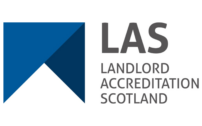Carbon Monoxide Detection
Supporting information for Scottish Landlord Registration
Key Points
The installation of CO detectors is intended to reduce the risk of CO poisoning and the consequent loss of life and serious injury.
The revised Tolerable Standard includes a criterion for ‘satisfactory equipment for giving warning if carbon monoxide is present in a concentration that is hazardous to health’ and applies to housing of all tenures. The new law came into force on 1 February 2022 and it extends the standard that applied in the Private Rented Sector (PRS) under the Repairing Standard for private landlords.
Therefore, landlords should have already been complying and are required to do so regardless of when the tenancy started and what previous requirements have already been met.
The guidance defines what is ‘satisfactory’ by setting out the requirement for:
- CO detectors to be fitted in all rooms where there is a fixed combustion appliance (excluding an appliance used solely for cooking) or a flue.
CO Detector
A device that detects the presence of CO in a concentration that is hazardous to health, giving an audible, and in some cases visible, warning. CO detectors should comply with BS EN 50291 and be powered by a battery designed to operate for the working life of the detector. The detector should incorporate a warning device to alert the users when its working life is due to expire.
Hard wired mains operated CO detectors complying with BS EN 50291 (Type A) with fixed wiring (not plug in types) may be used as an alternative, provided they are fitted with a sensor failure warning device. The detector should be regularly maintained and tested in accordance with the manufacturer’s instructions.
All CO detectors should be either:
- ceiling mounted and at least 300 mm from any wall (unless otherwise indicated by the manufacturer) or
- Wall mounted and positioned at least 150 mm below the ceiling and higher than any door or window in the room (unless otherwise indicated by the manufacturer).
Combined smoke/ CO detectors may be installed, providing they meet the appropriate requirements of BS EN 50291 with regard to CO detection/ alarm activation and the requirements of BS EN 14604 with regard to smoke detection/alarm activation.
Further Context
The installation of CO detectors is intended to reduce the risk of CO poisoning and the consequent loss of life and serious injury. The Repairing Standard sets a high benchmark for CO detection, matching the standard required for new building.The installation of CO detectors is intended to reduce the risk of CO poisoning and the consequent loss of life and serious injury. The Repairing Standard sets a high benchmark for CO detection, matching the standard required for new building.
The Tolerable Standard was amended by the Housing (Scotland) Act 1987 (Tolerable Standard) (Extension of Criterion) Order 2019 and now includes this new element covering CO alarms. For the first time, assessors will consider the presence, type and condition of CO alarms in a house when deciding if the house meets the Tolerable Standard.
Landlords should refer to Scottish Government Guidance for the Provision of Carbon Monoxide Alarms when installing, maintaining or repairing CO detectors – https://www.gov.scot/publications/fire-and-smoke-alarms-in-scottish-homes/
More information on the standard, including the types of alarms and how to assess what is required is in the – Tolerable Standard Guidance Chapters 16 and 17
A carbon monoxide detector should not be sited:
- in an enclosed space (for example in a cupboard or behind a curtain)
- where it can be obstructed (for example by furniture)
- directly above a sink
- next to a door or window
- next to an extractor fan
- next to an air vent or similar ventilation opening
- in an area where the temperature may drop below -10°C or exceed 40°C, unless the detector is designed to do so
- where dirt and dust may block the sensor
- in a damp or humid location or
- in the immediate vicinity of a cooking appliance
Maximise your Success as a Landlord
LAS run a regular programme of training courses helping landlords adopt best practice and remain updated with changes to legislation. Anyone involved in letting property in the private rented sector in Scotland is welcome to attend. You do not need to be accredited.
Maximise your success as a landlord
LAS run a regular programme of training courses helping landlords adopt best practice and remain updated with changes to legislation.
Anyone involved in letting property in the private rented sector in Scotland is welcome to attend. You do not need to be accredited.
